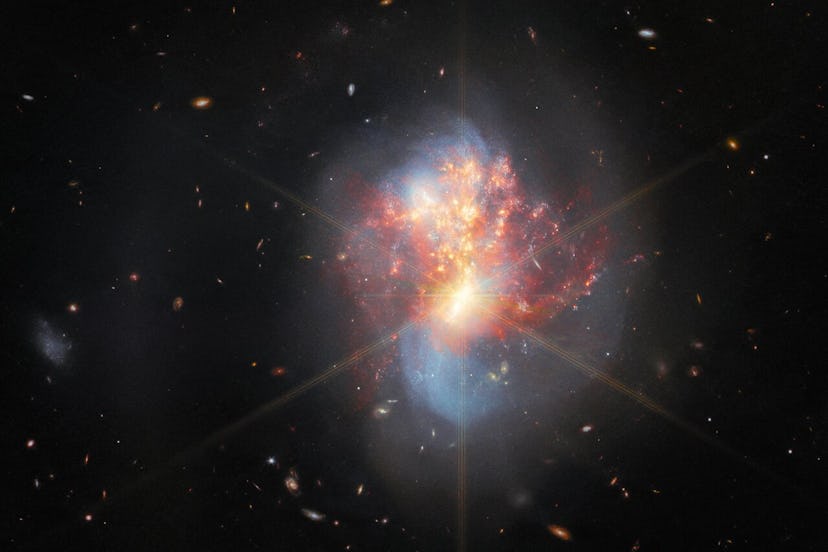JWST Photo: Two Ultra-Colorful Galaxies Collide And Form Stars
The latest set of images released from NASA shows two colorful galaxies colliding in what’s known as a “galaxy merger.”

A whole lot is happening in space that most of us have no idea about. But thanks to the James Webb Space Telescope (JWST) from NASA, we can see a whole bunch more detail of the workings of outer space as the incredible telescope captures images of real-life things that are millions of lightyears away.
A recent set of images released from NASA are incredibly stunning, showing two colorful galaxies colliding in what’s known as a “galaxy merger.” Literally, two worlds collide, and the science behind the image is just as fantastic.
Explaining the new photo of the colliding galaxies like you’re 5:
The galaxies are 270 million light-years away from us, but the incredible JWST captured an image of the collision, which looks like a gorgeous mix of bright colors. According to NASA, there’s a name for when this happens — they call it “galaxy merger” — and the process is actually way cooler than even this gorgeous photo.
“Their collision has ignited a frenzied spate of star formation known as a starburst,” NASA explains, “creating new stars at a rate more than twenty times that of the Milky Way galaxy.”
Basically, this photo shows a whole lot of new stars being formed, and it’s a phenomenon that astronomers have been really interested in learning more about. This collision was previously photographed by the Hubble Telescope, but with JWST’s capabilities, we’re seeing it in a whole new light.
“Webb’s infrared sensitivity and its impressive resolution at those wavelengths allows it to see past the dust and has resulted in the spectacular image,” NASA shares.
Comparing the photos of the colliding galaxies with JWST’s version on the left and Hubble’s previous photo on the right.
Thanks to the JWST’s instruments, including the MIRI, NIRSpec, and NIRCam, scientists can now see the bright oranges and reds at the center, which the Hubble never picked up.
For more information on the newly released image, be sure to check out NASA’s details.